A Brief History of the Cricket World Cup
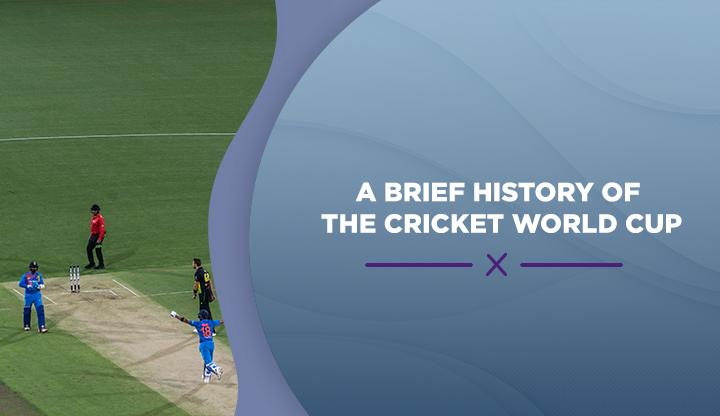
The first-ever Cricket World Cup, known as The Prudential World Cup, took place in England in 1975 and the West Indies were the first team to win it. Ever since their title-winning run, the tournament has seen ups and downs and several countries around the world have hosted it. Played every four years, the length of the game has been reduced from 60 to 50 overs as time passed by.
And with numerous changes also coming into the mix, the Cricket World Cup has turned into a sensational one and has always been judged historic. So let’s go through a brief history of this tournament and know everything about it.
The 1975 Cricket World Cup: The start of a storm
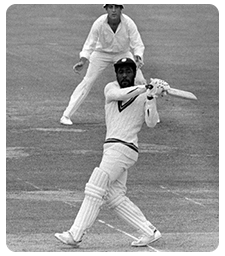
Cricket was not always considered an ideal sport as lack of interest and resources made many countries classify it as a failed experiment. But over the years, as the format grew shorter, it became popular as one-day cricket took over in the early 1960s. Thanks to the success of domestic one-day competitions in England and a few other parts of the world, One-day internationals promised to be an exciting affair, prompting the board to organise a Cricket World Cup.
The first Men’s Cricket World Cup took place in England, because, at the time, they were the only country that had enough resources to host a World Cup and were also successful with One-day internationals. The first run of three tournaments was called the Prudential Cup mainly because Prudential plc were a financial service company that sponsored the event.
-
Prudential World Cup 1975
The first Men’s Cricket World Cup saw eight teams take part in it. England, India, Pakistan, New Zealand, Australia, Sri Lanka, West Indies and a composite team from East Africa. A major omission was the South African cricket team who decided not to take part in the international event as a result of a sports boycott. West India eventually won the World Cup by beating Australia by 17 runs in the final game of the famous tournament.
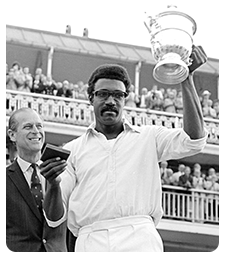
-
Prudential World Cups 1979 & 1983
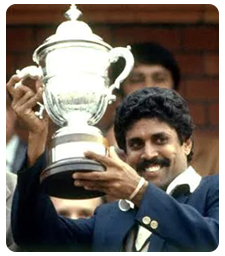
The next two World Cups that followed, saw various changes come into the mix and turn things around. For example, the 1979 Cricket World Cup saw the introduction of the ICC Trophy, which was a competition that selected non-Test playing teams for the World Cup. Hence, Sri Lanka and Canada were able to qualify through the ICC trophy. And just like the 1975 World Cup, West Indies were once again victorious as they won the World Cup for the second consecutive time.
After 1979, ICC (International Cricket Conference) agreed to make the competition a four-yearly event, resulting in the next World Cup being held in 1983. And as a huge disappointment, West Indies were not able to lift the trophy despite reaching the finals for a third consecutive time. By dominating the affair and beating West Indies by 43 runs, India was crowned the Champions in 1983
The country that is responsible for cash-rich leagues like the IPL, saw its winning odds as 66:1, thus leading everyone to believe that the Kapil Dev-led team couldn’t win the cup.
The 1987 Cricket World Cup: Re-shaping cricket
The 1987 Cricket World Cup was the start of something different for the famous sport as it was the first World Cup that was hosted outside England. Being held in India and Pakistan, the tournament is also famous for another reason as it was the first World Cup where West Indies failed to reach the finals. Moreover, instead of a 60-over format that was played at every World Cup before 1987, the 1987 World Cup switched to a 50-over affair.
The finals for the same was between England and Australia, where the latter came out on top by defeating England by 7 runs.
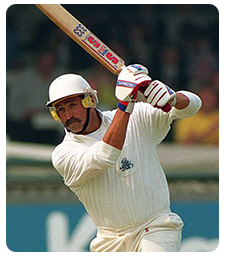
The 1996 Cricket World Cup: A dangerous time to play cricket
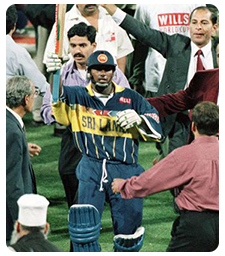
The 1996 championship can be judged as one of the worst periods in cricket history. It was held in India and Sri Lanka, where a few group stage games were played. It took place after the horrific Sri Lanka tour of Australia in 1995/96 where a no-balling of spinner Muttiah Muralitharan by Darrell Hair in a Test match at Melbourne Cricket Ground meant that the tournament had to be called off. There was also physical contact between Sanath Jayasuriya and Glenn McGrath and the Sri Lankan players also refused to shake hands after the game.
However, that was not the end of the horrific period because some Australian players also received death threats compounded by a bombing by Tamil Tigers in Colombo. Hence, the 1996 championship saw two top teams, West Indies and Australia refuse to play their games at Sri Lanka, which resulted in both games being awarded to Sri Lanka via default. The semi-final of the tournament was held in Eden Gardens, India and saw a game between India and Sri Lanka.
The Lankans were the winners as the Indian batsmen, who set out to chase 252, went from 98/1 to 120/8. The results were not something that the Indian fans could handle and riots broke out in protest against the Indian performance. While the semi-final ended up being a regrettable period in Indian cricket, the second semi-final between Australia and West Indies saw the Australian contingent claim victory over their rivals. And thus, a final between Sri Lanka and Australia was on the cards.
The high tension game went on to have different kinds of moments and ultimately, it was Sri Lanka who came out on top and won the 1996 championship.
The 2007 Cricket World Cup: The Growth of cricket
11 years after the 1996 World Cup debacle, where Sri Lanka and Australia met each other in an intense final, the 2007 World Cup Final was the next time both teams met at the famous 50 over format. While the tournament was hosted by the West Indies, it also became the first Cricket World Cup to be hosted on all six populated continents, thus completing a period in which cricket grew from strength to strength.
With sports betting and other kinds of activities going on in full swing, the 2007 World Cup final match was the one that everyone waited for. And while Sri Lanka had the last laugh in 1996, it was Australia who managed to win and secure their 4th title. While Australia did not reach the finals in the 2011 World Cup, they not only reached the finals in 2015 but also won it, thus extending their title victory to 5.
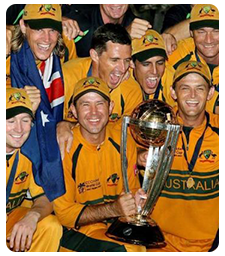
The 2019 Cricket World Cup: Back to basics

The 2019 edition of the Cricket World Cup came back to England for the fifth time with a few of the matches also being played in Wales. Contested by 10 teams, the tournament was known as the 12th Cricket World Cup. There was also a change in its format as the tournament went on with a single round-robin group with the top four teams qualifying towards the next phase of the tournament, i.e. knockout stages.
As the knockout stages progressed, bettors were keen on moving forward with cricket betting and looked towards pushing forward their assumptions on what might occur. People were excited as the tournament progressed and the qualifying teams had their fans behind to help them get on with every game that was bound to come.
With India qualifying for the latter stages of the tournament, the attendees for the same went on to reach remarkable numbers. Apart from the massive number of fans in the stands, online betting for the World Cup was also on the rise. By the end of the tournament, it was tagged as the most-watched cricket competition of 2019. It was also the last World Cup that featured MS Dhoni in action, as the legendary Indian captain retired from international cricket in 2020.
Table of Content
-
The 1975 Cricket World Cup: The start of a storm
-
Prudential World Cup 1975
-
Prudential World Cups 1979 & 1983
-
The 1987 Cricket World Cup: Re-shaping cricket
-
The 1996 Cricket World Cup: A dangerous time to play cricket
-
The 2007 Cricket World Cup: The Growth of cricket
-
The 2019 Cricket World Cup: Back to basics
RECENT

Champions League
Constitution Hill’s Champion Hurdle Prep Disrupted after Unsatisfactory Scope
Jan 23rd, 2024 By Ben Joseph
Premier League
Iroko’s Miracle Comeback – Cheltenham winner back in training after injury surprise
Jan 23rd, 2024 By Ben Joseph
Premier League
The Transfer Window So Far: Has Financial Fair Play Slowed Premier League Spending?
Jan 23rd, 2024 By John McMullen
Football, Premier League
Game Week 13: High-Flying Bees Host Red Hot Gunners
Nov 20th, 2023 By John McMullen
Football, Premier League
Game Week 13: Battle For Bragging Rights at St. James’ Park
Nov 20th, 2023 By Ben Joseph
Football, Premier League
Game Week 13: Title Showdown at Stamford Bridge
Nov 20th, 2023 By John McMullen
Football, Premier League
Game Week 12: Buoyant Villa Host Surging Fulham in West London Derby
Nov 10th, 2023 By Ben Joseph
Football, Premier League
Game Week 12: Can Forest Chop Down the Hammers?
Nov 10th, 2023 By John McMullen
Football, Premier League
Game Week 12: Rampant Reds Host High-Flying Bees
Nov 10th, 2023 By Ben Joseph
Football, Premier League
Game Week 12: Can Plucky Blades Clip High-Flying Seagulls’ Wings?
Nov 10th, 2023 By Ben Joseph
Football, Premier League
Game Week 12: Table Toppers Tussle as City Host Chelsea
Nov 10th, 2023 By Ben Joseph





